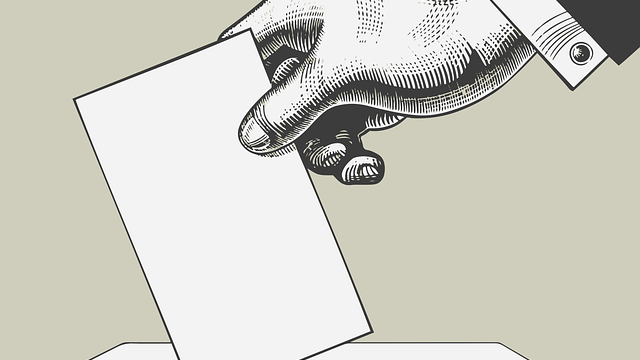Once the thrill of filming dogs at polling booths has passed, most major broadcasters seek to strike an entirely serious tone when covering the UK’s most important democratic event. Yet avid viewers of the General Election will know that they don’t often get their way. Amidst the palpable tension of count announcements, particularly in seats where major figures find out whether they will be allowed to influence the lives of millions, cameras can’t help but pick up the cheery figures of the nation’s joke candidates, their top hats angled jauntily and their mascot costumes newly dry cleaned for the big day.
While for many, these figures provide welcome relief from the death by a thousand boring but incredibly important knives that election day can often be, others ask whether declarations that influence the lives of millions both at home and abroad should be treated so lightly.
Although lightheartedness is indeed a primary goal for many joke candidates, with the Monster Raving Loony Party emphasising that they bring ‘frivolity to otherwise dull elections’ on their website, they serve a number of other, perhaps more appropriate, purposes.
The most obvious function of joke candidates is as satire, an opportunity to comment on the election, its parties and their manifestos. Amongst the promises to list Claudia Winkleman’s fringe as a heritage site and make sure England wins the Euros, genuine political comment and discontent at the disingenuousness of major manifestos can be found: Count Binface in particular promised to ‘build at least one affordable house’ and for ‘ministers’ pay to be tied to that of nurses for the next 100 years’.
Vision spoke to the University of York’s very own joke candidate, known only as Louie, who ran in last year’s student union elections. He told us that “joke candidates highlight the flaws in actual candidates’ campaigns, and also the monotonous and often boring nature of student democracy”, as well as making “elections more palatable for regular students”, and that running had taught him that “people will often choose the most popular candidate, even if they have the weakest platform”. While, like the Monster Raving Loony Party, Louie emphasises the entertainment value of satirical candidacy, his comments draw attention to the increased electorate engagement this entertainment brings, and the opportunities for learning and criticism it affords.
In a similar vein, candidates serve as a vessel through which the public can vent their frustration. This year’s Labour victory and strong Reform support have been labelled protest votes in themselves, but the voter who feels that none of the available parties align with their views may turn to a figure who expresses their dissatisfaction, more vocally than a spoilt ballot, without risking supporting serious policies they do not agree with. This was evident in this year’s election, with Count Binface receiving his highest ever parliamentary vote (309).
Arguments can be made that these votes could be put to better use, that tight margins such as former Conservative party chairman Richard Holden’s victory by 20 votes in Basildon and Billericay show that wasted votes have tangible effects. Such arguments overlook the democratic function of this ‘waste’; while the knowledge that votes that were cast in protest could otherwise have made a tangible difference is frustrating, the expression of dissatisfaction with the electoral system is in itself an engagement with it, and should be treated as such.
Niko Omilana’s disruption of the traditional quaint politeness of election night by holding the letter ‘L’ behind Rishi Sunak’s head will have outraged many, and expressed the frustration of many more.
Campaigns such as Omilana’s also serve a democratic function; his antics brought the election to the attention of his 7.6 million Youtube subscribers, most of them young people. While many of these people may have already planned on voting, or are too young to do so, the Guardian’s report that this year’s election turnout was the lowest since 2001 makes clear that encouraging electoral engagement should remain a priority. Members of the public who first familiarise themselves with the process of voting through engagement with a beloved influencer may find themselves more likely to participate in the future.
These campaigns also serve as a reminder to the public of their own democratic rights, that they too can run for ministerial office (with the caveat of a £500 deposit), and that the roles are not reserved for an elite, inaccessible few. Omilana took this to a dubious extreme by entering lookalikes under his own name in multiple constituencies, but the running of a silly candidate may prompt the rise of a serious independent or kick-start the career of a party politician.
A final function of joke candidacy is to draw attention to a genuine cause: the Elmo suit of activist Bobby Smith that was much noticed standing next to the victorious Keir Starmer on election night was designed to bring eyes to his calls for family law reform. Individuals who seek the eyes of a nation on their cause can find them in the enforced impartiality of election coverage.
Ultimately, despite their flaws, joke candidates are a celebration of democratic freedom. Whilst sometimes they step too far, or risk distracting voters from major issues, to do away with them would be a restriction of democracy, a restriction of protest and a reinforcement of the inaccessibility of politics. That a silly man in a top hat can run alongside some of the most powerful figures in the world is fundamentally a glorious thing, a reminder to politicians that they answer to a dissatisfied public, and a reminder to the electorate that their involvement can stretch into running themselves. The eccentric figure standing next to the future prime minister, grinning cheerfully as they receive less than a hundred votes, is a sublime reminder that politicians and voters operate on the same spectrum, that the apparent wall between them is climbable, with ‘Captain Beany’ sat astride it, leading the way.
